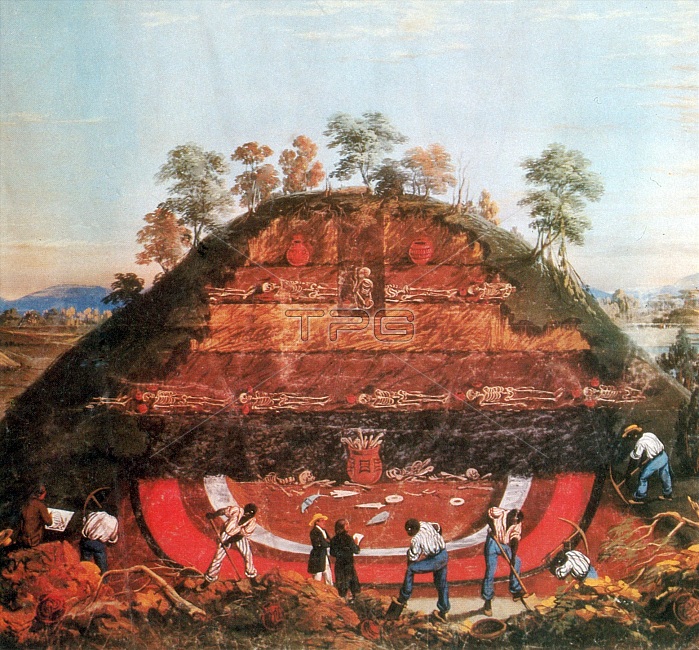
Mound building was a central feature of the public architecture of many Native American and Mesoamerican cultures from Chile to Minnesota. Thousands of mounds in America have been destroyed as a result of farming, pot-hunting, amateur and professional archaeology, road-building and construction. Surviving mounds are still found in river valleys, especially along the Mississippi, Tennessee and Ohio Rivers, and as far west as Spiro Mounds in Oklahoma. Mounds were used for burial, to support residential and religious structures, to represent a shared cosmology, and to unite and demarcate community. Common forms include conical mounds, ridge-top mounds, platform mounds, and animal effigy mounds, but there are many variations. Mound building in America is believed to date back to at least 3400 BC in the Southeast. The Adena and the Mississippian cultures are principally known for their mounds, as is the Hopewell tradition. Illustration originally captioned: Cutaway version of an Indian mound is one of the few surviving panels from the "Panaroma of the Mississippi Valley" commissioned by Doctor Montroville Wilson Dickeson. Painted by J.J. Egan in 1950, based on Dickeson's sketches who appears as the artist in the bottom of the far left corner.
| px | px | dpi | = | cm | x | cm | = | MB |
Details
Creative#:
TOP22163390
Source:
達志影像
Authorization Type:
RM
Release Information:
須由TPG 完整授權
Model Release:
N/A
Property Release:
No
Right to Privacy:
No
Same folder images:

 Loading
Loading